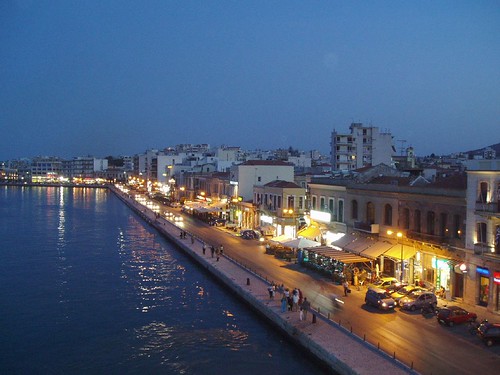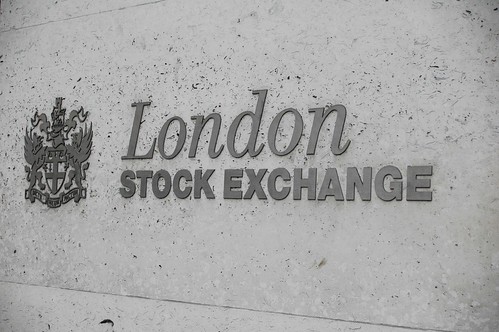Benches, Coffee and Bubbles - The origins of Agile Banking
Published June 30th, 2009 edit replace rm!
Last week I gave my talk on Agile Banking at Reboot 11
This week I have taken my talk and turned it into a series of blog articles that I will post here once a day.
In the beginning was the bench. The word Bank comes from the Italian word for bench “Banca”.
Rather than a modern bench these were more like the above modern lottery stalls in Panama and were manned by money exchangers found in markets going back to roman times. By the middle ages the Banca’s in Italian trading centers like Venice and Genoa were not just exchanging money, but also lending and storing money to local traders, whom they probably new very well.
Genoa is famous today as the home of pesto. Very delicious indeed. However they were also home to the first modern company.
These always had a limited purpose, so investors like individual traders and Banca’s would know exactly what they were investing in. Such as conquering and taxing the Greek island of Chios:
Nowadays companies more than often attempt to be general purpose. Most normal company founding documents say something like “This company may perform any legal business”. Bank companies generally do have some limits and say something like “This company may perform banking business”, which really could encompass just about anything.
The above people are the kind of web 2.0 hipster you will find in San Francisco’s Blue Bottle Coffee everyday. If you follow anyone from San Francisco on Twitter, you have no doubt heard tweets like “Heading down to Blue Bottle for Coffee” or “Just bumped into
These people were the hipsters of their time. They are seen here at Jonathan’s Coffee House. Jonathan’s was one of many popular Coffee Houses in the City of London in the late 1600’s and early 1700s. These places were where all the smart (and not so smart) business people hung out all day long. Drinking coffee, gossiping and most important buying and selling shares in the cool companies of their time. I don’t know if he was bored or what, but this guy John Castaing started to keep a list of trades happening during the day in what may be one of the worlds first mash-ups.
Jonathan’s and John’s list became what is now the London Stock Exchange.
In reality none of our financial institutions and instruments were thought up by think tanks, university professors or government employees. Rather smart entrepreneurs thought up solutions to the problems of the day.
Yet there were problems…
Many people think bubbles as being modern. We remember the dot com bubble and are now living in the immediate effects of the housing bubble. But really they have been around for many centuries. One of the coolest things about these early bubbles was that they were always documented by really cool cartoons.
Tulip mania hit the Netherlands and over a couple of months the whole country had gone tulip mad. Everyone The price of tulip bulbs started shooting up in November of 1636. Right before the bubble popped the following february, the price had risen 20 times.
“Many individuals grew suddenly rich. A golden bait hung temptingly out before the people, and, one after the other, they rushed to the tulip marts, like flies around a honey-pot. Every one imagined that the passion for tulips would last for ever, and that the wealthy from every part of the world would send to Holland, and pay whatever prices were asked for them. The riches of Europe would be concentrated on the shores of the Zuyder Zee, and poverty banished from the favoured clime of Holland. Nobles, citizens, farmers, mechanics, seamen, footmen, maidservants, even chimney-sweeps and old clotheswomen, dabbled in tulips.” MacKay
The South Sea Company was a really cool British company founded in 1711. They had the official monopoly for trade with Latin America. The stock price grew to crazy levels (no doubt people were drinking lots of Coffee at Jonathan’s) when at last the bubble burst. Spain was at war with UK and the Latin American trade dwindled. This became known as the South Sea Bubble and was probably the first time the word Bubble was used to describe such an event.
John Law was a very slick Scottish guy. Maybe the Bernie Madoff of his time. John was an ardent gambler and escaped a death sentence in Scotland after killing a guy in a duel. Somehow John, who obviously was a talented salesman, managed to become the treasurer of France. During this time he created his own private bank and pioneered the creation of Paper Money. The bank bought the Mississippi company, who’s job was to colonize and trade with French Louisiana in modern day US.
John then proceeded to convince the king to make his bank the Banque Royale endorsing all his paper money with a royal guarantee. At the same time he started a strong marketing campaign selling Mississippi Company shares.
People of all classes went crazy and the bubble was created. In 1720 when people realized that Louisiana wasn’t quite the Eldorado he said it was the bubble burst and the king was left printing worthless money to solve crisis. John himself escaped France and spent the rest of his life gambling in Rome, Copenhagen and Venice.
Why this history?
Innovation starts with people, it starts small, it starts limited. Bad stuff still happens.
In tomorrows post I will cover e-gold and how it relates to my idea of Agile Banking. Yesterday I wrote about Risky Business the core problem in todays financial services industry.











